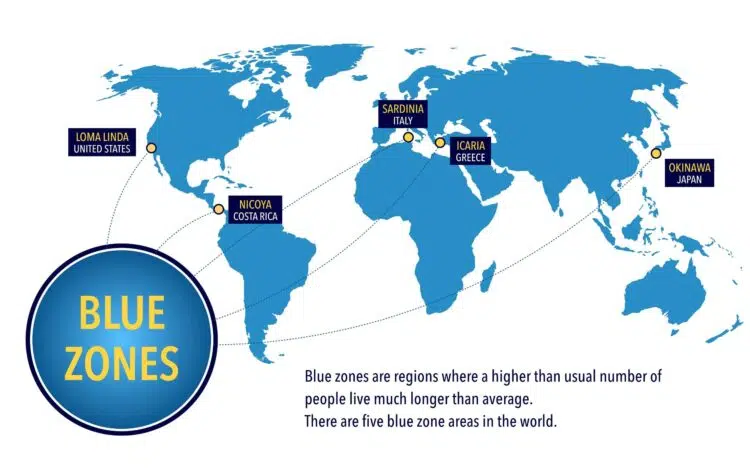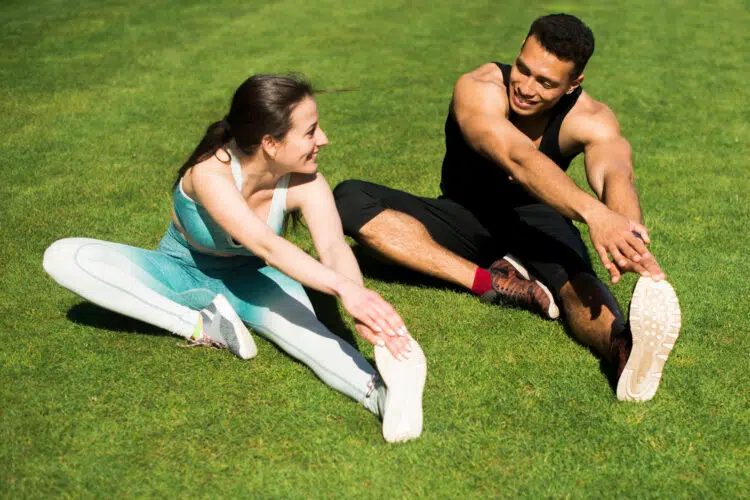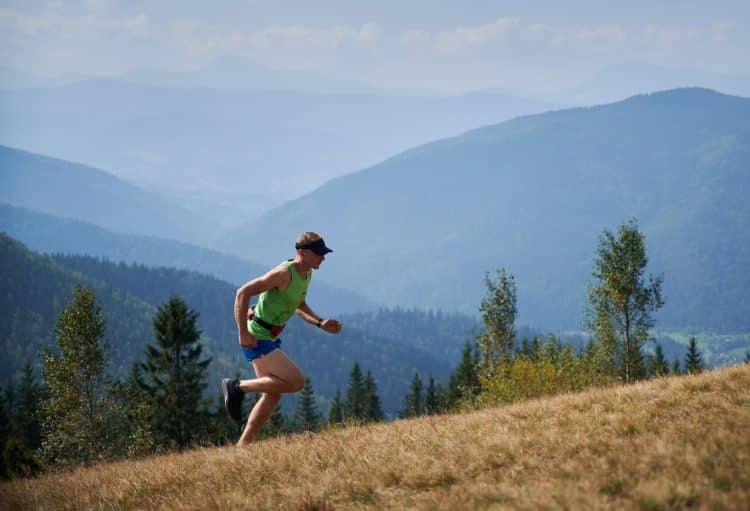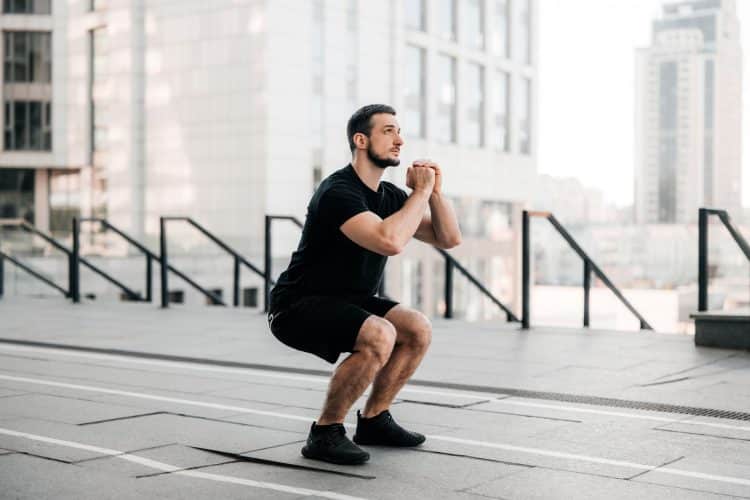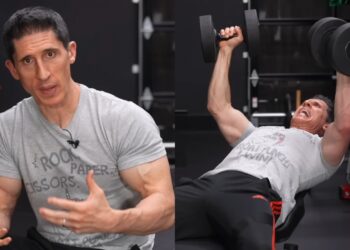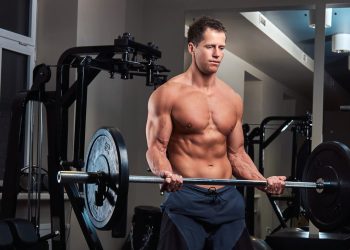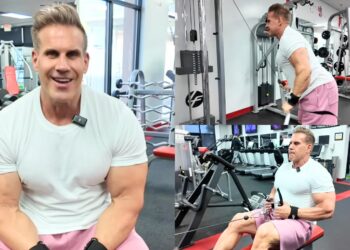Exercise and a healthy diet are often touted as the fountain of youth. Work out regularly and eat plenty of vegetables and you’ll not only live longer but enjoy a better quality of life.
However, such claims often sound too good to be true. After all, exercisers and healthy eaters sometimes die young, and smokers and overweight people sometimes live to be 100!
And yet, it turns out that expressions like, “an apple a day keeps the doctor away,” and “let food be your medicine and medicine be your food” are more than just throwaway clichés, and there are entire populations who live longer, healthier lives because of their diets and lifestyles.
I’m talking about the “Blue Zones.”
Blue Zones are geographical areas where incredible health and longevity are the norm. Residents of the Blue Zones live longer, happier, more productive lives, often outliving regular folk by a decade or more.
As a veteran personal trainer, and someone in their late 50s, I have a vested interest in long-term health and longevity, and the role that diet and exercise may play in my chances of living to be 100. I realize that aging is unavoidable, but that doesn’t mean I want to spend my latter years as a decrepit old man!
Level Up Your Fitness: Join our 💪 strong community in Fitness Volt Newsletter. Get daily inspiration, expert-backed workouts, nutrition tips, the latest in strength sports, and the support you need to reach your goals. Subscribe for free!
I’ve even written a book about this very subject – Live Long, Live Strong: Keep Healthy and Fit for Life.
So, in this article, I am going to take a closer look at the Blue Zone fitness and lifestyle habits that could add years to your lifespan.
What Are Blue Zones?
The term Blue Zone was first used by National Geographic explorer, researcher, and author Dan Buettner. Working in conjunction with demography and health experts, Buettner identified several regions where the residents lived unusually long, healthy lives.
The current Blue Zones are:
- Okinawa, Japan
- Sardinia, Italy
- Nicoya Peninsula, Costa Rica
- Ikaria, Greece
- Loma Linda, California, USA
Here are a few statistics from these Blue Zones (1):
Okinawa, Japan
- Okinawan women have the longest female life expectancy in the world.
- Okinawans have the highest percentage of centenarians (people living to 100+) in the world.
Sardinia, Italy
- Men in Sardinia have the highest male life expectancy in the world.
- Sardinian men have a ten times greater chance of reaching age 100 compared to other Italian men.
Nicoya Peninsula, Costa Rica
- People in Nicoya have the lowest rates of middle-age mortality in the world.
- Nicoyan men have the second highest life expectancy in the world, second only to Japanese men.
Ikaria, Greece
- People in Ikaria live about 8-10 years longer than Americans.
- Ikarians have a 20% lower rate of cancer, a 50% lower rate of heart disease, and almost no dementia compared to the rest of the Western world.
Loma Linda, California
- Residents of Loma Linda live about 7-10 years longer than other Americans.
- Men live to an average age of 89 and women to 91, compared to 76 and 81 for other Americans.
Needless to say, these impressive statistics suggest that Blue Zone residents have cracked the code for living a longer, healthier life. However, Buettner noticed that quality of life is also higher. “Blue Zoners” don’t just live longer; they live better, too.
The “Power Nine” – Why People in the Blue Zones Live Longer
There is no single factor that’s responsible for the longer, healthier lives of Blue Zone residents. Rather, believes Buettner, it’s the result of several factors that, despite geographical differences, are shared by all the Blue Zones.
He calls these factors the “Power Nine (2):”
- Right Tribe: Surround yourself with a supportive social circle that encourages healthy behaviors.
- Loved Ones First: Prioritize family and close relationships.
- Belong: Participate in community-based activities.
- Purpose: Have a strong sense of purpose that drives daily life.
- Wine at 5: Drink moderate amounts of alcohol, particularly red wine, typically with friends or food, although this is considered optional.
- Plant Slant: Follow a plant-heavy diet, e.g., the Mediterranean Diet.
- 80% Rule: Eat until you’re 80% full to avoid overeating.
- Downshift: Incorporate routines to manage and reduce stress.
- Move Naturally: Engage in regular, natural exercise and physical activity throughout the day.
It’s beyond the scope of this article to do a deep dive into the first eight things on this list. But, as a veteran personal trainer, it makes sense for me to focus on the last item on the list – exercise and physical activity.
Blue Zone Fitness Secrets
Lots of people exercise. They hit the gym or pound the pavement in pursuit of fitness and six-pack abs. Despite all this effort, there is no guarantee that all this intense training will extend your lifespan.
In contrast, Blue Zone residents don’t tend to do much formal exercise. Instead, they perform a lot of natural movements and are physically active for several hours each day. In fitness terminology, we call this type of activity NEAT, short for Non-Exercise Activity Thermogenesis. Blue Zoners just call it life!
NEAT burns kilocalories to prevent weight gain and is good for your heart, lungs, and circulatory system. However, it’s not so challenging that you can do it for several hours each day (3).
Also, the risk of injury while doing NEAT is very low. And because the movements are very varied, the muscle imbalances and overuse injuries that often plague conventional exercises are not an issue.
This means that Blue Zoners can maintain an active lifestyle for years or even decades at a time. In contrast, many people “drop out” of exercise, work out sporadically, or are too daunted by the idea of intense exercise to even start.
Examples of Blue Zone NEAT activities include:
- Walking to nearby destinations
- Gardening and tending to plants
- Cooking meals from scratch
- Cleaning and maintaining their homes
- Carrying groceries or water
- Chopping wood
- Tending to animals (feeding, cleaning)
- Walking or cycling for transportation
- Gathering firewood or other resources
- Engaging in social activities, like dancing or games
- Playing with grandchildren
- Manual farming or harvesting crops
These activities are part and parcel of living in a Blue Zone, most of which are in rural areas without lots of modern technology and labor-saving devices.
When Blue Zone residents do exercise, it tends to be in short, strenuous bursts – so-called exercise snacks or micro-workouts. These occasional intense bouts of exercise help preserve muscle and maintain bone density, both of which contribute to long-term health and longevity.
Level Up Your Fitness: Join our 💪 strong community in Fitness Volt Newsletter. Get daily inspiration, expert-backed workouts, nutrition tips, the latest in strength sports, and the support you need to reach your goals. Subscribe for free!
How to Exercise Like a Blue Zone Resident

While exercising like a Blue Zoner won’t prepare you to run a marathon or build basketball-sized biceps, it could be the secret to a long, healthy life. However, unless you are lucky enough to live in a bonafide Blue Zone, you may be wondering how to incorporate Blue Zone fitness secrets into your schedule.
The good news it’s actually pretty simple, and it doesn’t involve hitting the gym or pouring with sweat!
Walk Briskly for an Hour a Day
Walking is arguably the most accessible yet beneficial thing you can do for your health. As a weight-bearing activity, it’s good for muscle and bone strength and provides numerous cardiovascular health and fitness benefits.
You can walk anywhere, and anytime, and you don’t need any special skills or equipment to do it. As such, walking is the perfect excuse-free workout, and just about everyone can and should do it.
An hour of walking is roughly equal to 8-10,000 steps and is an effective way to improve physical and mental health and can contribute to weight loss (4). In terms of speed, “brisk” is somewhat subjective. However, your walks should leave you slightly out of breath.
You don’t need to walk for an hour in a single session. Instead, feel free to spread your walking out throughout the day, e.g.:
- 10 minutes before breakfast
- 10 minutes during your morning coffee break
- 15 minutes after lunch
- 10 minutes during your afternoon coffee break
- 15 minutes after dinner
Of course, you can walk for more than an hour if you wish, but one hour should be your daily minimum.
Not a walking fan? No problem! Cycling is another Blue Zone favorite. Provided you clock up an hour or so a day, according to Blue Zone experts, you’ll experience the same longevity-boosting effect.
Related: The Phenomenal Benefits of Walking One Hour A Day for A Month
Do Periodic Full-Body Workouts
Walking (or cycling) every day will take you a long way toward your longevity goal. However, many Blue Zone activities are more strenuous and also involve your upper body and core. Try chopping wood or carrying buckets of water and tell me that’s not a workout!
Full-body workouts using freeweights, machines, bands, or bodyweight exercises replicate the demands of this type of activity. Aim to do 2-3 workouts per week on non-consecutive days to allow sufficient time for recovery.
While this type of workout won’t build bodybuilder-sized muscles, it will help reduce age-related muscle loss, preserving your functional strength in the process. Keep your workouts short, building them around time-efficient compound exercises. That way, even after a warm-up, you should be over and done in 30-40 minutes.
Here’s a sample Blue-Zone-inspired home workout to try:
| # | Exercise | Sets | Reps | Recovery |
| 1 | Air squat | 3 | 12-20 | 60-90 seconds |
| 2 | Push-up | 3 | 12-20 | 60-90 seconds |
| 3 | Inverted row | 3 | 12-20 | 60-90 seconds |
| 4 | Band good morning | 3 | 12-20 | 60-90 seconds |
| 5 | Farmer’s walk | 2 | 15-20 yards | 60-90 seconds |
| 6 | Reverse lunge | 2 | 12-20 | 60-90 seconds |
| 7 | Band Pallof press | 2 | 12-20 | 60-90 seconds |
Work on Your Balance
Good balance can be the difference between a long, healthy life and being confined to a bed in your latter years. Falls in older people are a leading cause of disability and even death. Consequently, anyone who wants to age well should do activities that challenge and develop their balance.
Balance tends to decline with age and is affected by both muscular and neurological components. However, it’s also very trainable, and improvable at any age (5).
Simply sitting less and moving more will improve your balance, but there are plenty of additional exercises you can do that will reduce your risk of falls. These include:
- Standing on one leg
- Walking on tiptoes
- Lunges/reverse lunges
- Step-ups
- Walking along a line on the floor
- Zigzag walking
Because these are low-stress exercises, you should be able to do them every day without wearing yourself out. For example, you can stand on one leg while brushing your teeth or walk along a line on the floor during commercial breaks on TV.
Conclusion
Blue Zone residents use a variety of interventions to help them live longer, healthier, more productive lives. They eat well, socialize, avoid stress, and stay busy – all of which enhance and enrich their lives.
Exercise also plays a part, but most Blue Zoners do not work out intensely or for long periods. Gym workouts and high-intensity interval training are NOT part of the Blue Zone lifestyle!
Instead, Blue Zone residents do their best to be active for several hours per day. This includes walking, chores, and simply doing jobs that many other people leave to machines. While such an approach won’t do much for your muscle mass or high-end fitness, it seems to be just what is needed for long-term health and longevity.
This all adds up to a less-is-more approach to fitness. Instead of a couple of intense workouts a week, as is common for more exercisers, Blue Zoners dial down the difficulty and do some form of activity every day.
While this may fly in the face of most conventional workouts, the evidence suggests that this low-key approach to fitness could help you live much longer than the average American.
Related: Food Myths Debunked: Are These Popular Sayings Actually True?
References:
- Buettner D, Skemp S. Blue Zones: Lessons from the World’s Longest Lived. Am J Lifestyle Med. 2016 Jul 7;10(5):318-321. doi: 10.1177/1559827616637066. PMID: 30202288; PMCID: PMC6125071.
- Buettner, D. (2016, November). Power 9: Reverse Engineering Longevity. Blue Zones. Retrieved from https://www.bluezones.com/2016/11/power-9/
- Levine JA. Non-exercise activity thermogenesis (NEAT). Best Pract Res Clin Endocrinol Metab. 2002 Dec;16(4):679-702. doi: 10.1053/beem.2002.0227. PMID: 12468415.
- Yuenyongchaiwat K. Effects of 10,000 steps a day on physical and mental health in overweight participants in a community setting: a preliminary study. Braz J Phys Ther. 2016 Jul-Aug;20(4):367-73. doi: 10.1590/bjpt-rbf.2014.0160. Epub 2016 Jun 16. PMID: 27556393; PMCID: PMC5015672.
- Lenox ER, Jones MW. Balance-based exercise programs on balance in older adults with mild to moderate dementia: A critically appraised topic. Ageing Res Rev. 2023 Nov;91:102073. doi: 10.1016/j.arr.2023.102073. Epub 2023 Sep 12. PMID: 37709056.

